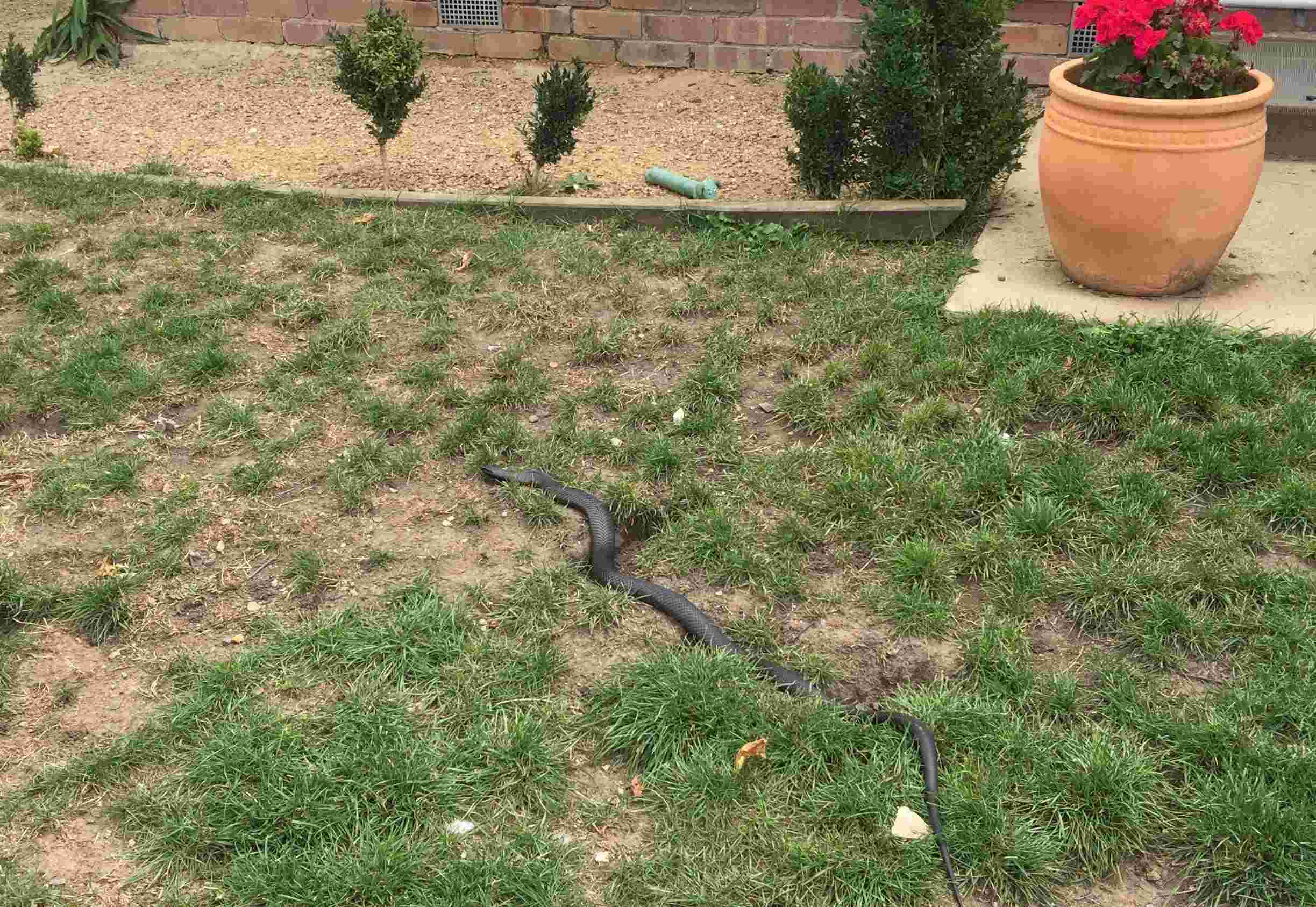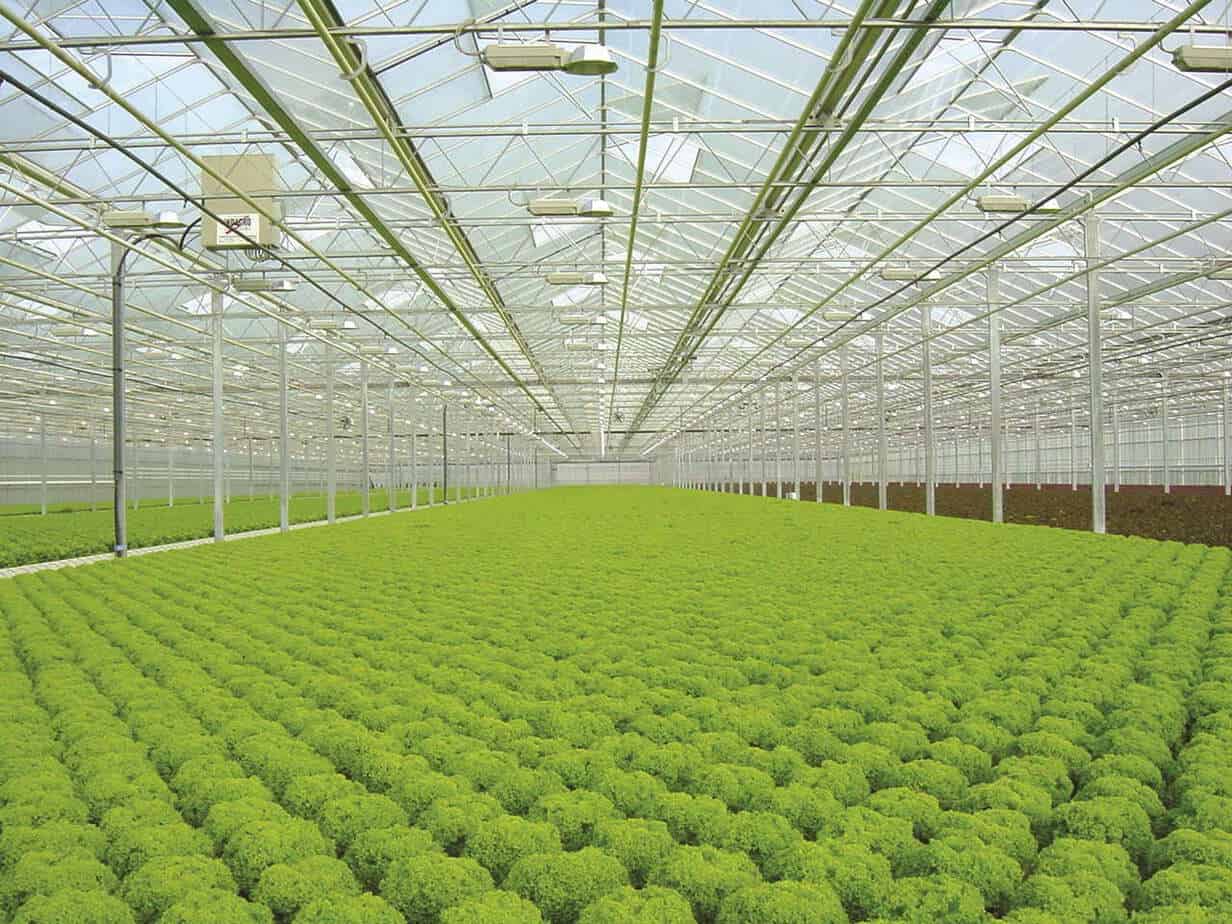Home>Gardening Basics>Understanding Soil>What Soil Is Best For Snake Plant


Understanding Soil
What Soil Is Best For Snake Plant
Published: February 11, 2024
Discover the ideal soil for your snake plant with our comprehensive guide. Gain a better understanding of soil types and their impact on the growth and health of your snake plant.
(Many of the links in this article redirect to a specific reviewed product. Your purchase of these products through affiliate links helps to generate commission for Chicagolandgardening.com, at no extra cost. Learn more)
Table of Contents
Introduction
Welcome to the world of snake plants! These stunning and resilient plants have gained immense popularity among indoor gardeners for their unique appearance and low maintenance requirements. Whether you are a seasoned plant enthusiast or a beginner looking to add greenery to your space, understanding the importance of the right soil for your snake plant is crucial for its overall health and growth.
Snake plants, scientifically known as Sansevieria, are native to West Africa and have become a favorite choice for indoor plants due to their ability to thrive in low light conditions and tolerate neglect. With their striking long, sword-like leaves and architectural appeal, snake plants make perfect additions to homes and offices.
However, to ensure the optimal growth and longevity of your snake plant, providing it with the right soil is essential. A well-draining and nutrient-rich soil will not only support the plant’s root development but also prevent waterlogged conditions that can lead to root rot.
Throughout this article, we will delve into the characteristics of the ideal soil for snake plants, discuss the importance of proper pH levels and drainage, explore organic and inorganic soil amendments, and share recommended soil mixtures and DIY recipes. By the end, you will have a comprehensive understanding of what soil is best for your snake plant, enabling you to create a nurturing environment for its flourishing.
Understanding Snake Plants
Before diving into the specific soil requirements for snake plants, it is important to have a basic understanding of these unique plants. Snake plants belong to the genus Sansevieria, which consists of over 70 species and is a part of the Asparagaceae family. They are native to arid regions of West Africa, where they have adapted to survive in harsh conditions.
Snake plants are characterized by their long, upright leaves that grow in a rosette formation. The leaves can range in color from dark green to variegated patterns of yellow and green, and some species even have silvery or reddish hues. These leaves are designed to store water, allowing the plant to withstand periods of drought.
In addition to their unique appearance, snake plants are known for their ability to purify the air. Through a process called photosynthesis, they convert carbon dioxide into oxygen, improving the air quality in their surroundings. This makes snake plants an excellent choice for indoor spaces, where they can help remove toxins and pollutants.
Another remarkable characteristic of snake plants is their low maintenance requirements. These plants are known for their resilience and ability to thrive in various conditions, including low light levels and neglect. They are suitable for both novice and experienced plant enthusiasts, as they can tolerate periods of drought and can adapt to different temperature ranges.
Snake plants also make excellent choices for those with busy schedules or limited time for plant care. They have a slow growth rate and typically only require watering every two to four weeks, depending on the environmental conditions. Additionally, they are relatively pest-resistant, making them a hassle-free option for indoor gardening.
Now that we have a better understanding of the nature of snake plants, let’s explore the crucial role that the right soil plays in their overall health and well-being.
Importance of the Right Soil
Choosing the right soil for your snake plant is of utmost importance for its long-term health and growth. Soil serves as the foundation for the plant’s root system, providing essential nutrients, water, and oxygen. The right soil composition ensures that these needs are met, allowing the snake plant to thrive.
One of the main reasons why the right soil is crucial is its impact on drainage. Snake plants prefer soil that allows water to flow freely and drains excess moisture. When the soil retains too much water, it can lead to root rot, which can be fatal for the plant. On the other hand, soil that drains too quickly can cause the plant to become dehydrated.
In addition to drainage, soil also plays a vital role in providing essential nutrients to the snake plant. The right soil composition should include organic matter and nutrients that support healthy growth. This ensures that the plant receives the necessary nourishment to develop strong roots, vibrant foliage, and even produce flowers in some species.
Moreover, the right soil can also help prevent and control common issues that snake plants may face, such as fungal infections and pests. Well-draining soil reduces the risk of fungal growth, while a balanced soil pH can deter pests from infesting the plant.
It is worth noting that using the wrong type of soil, such as heavy clay-based soil or soil with poor drainage, can lead to various problems for your snake plant. These issues include root rot, nutrient deficiencies, stunted growth, and overall poor health.
By providing the right soil for your snake plant, you are creating a favorable environment that mimics its natural habitat. This, in turn, allows the plant to thrive, promoting strong growth, and ensuring that it remains a beautiful and resilient addition to your indoor or outdoor space.
Characteristics of Ideal Soil for Snake Plants
When selecting the ideal soil for your snake plant, there are several characteristics to consider. These characteristics ensure that the soil provides the necessary conditions for the plant’s growth and overall health. Here are some key features to look for in the soil for your snake plant:
- Well-draining: Snake plants thrive in soil that allows water to pass through easily. This helps prevent waterlogged conditions that can lead to root rot. Look for a soil mix that includes materials like perlite, sand, or vermiculite to improve drainage.
- Nutrient-rich: The soil should contain a good balance of nutrients to support the plant’s growth. Look for a potting mix that includes organic matter, such as compost or peat moss, which provides essential nutrients for the snake plant.
- Aerated: Snake plants benefit from a soil mix that is well-aerated, allowing roots to breathe and preventing compaction. Incorporating materials like perlite or pumice into the soil can enhance aeration.
- Neutral to slightly acidic pH: Snake plants prefer soil with a slightly acidic to neutral pH range of 6.0 to 7.0. This pH level allows for optimal nutrient uptake and overall plant health.
- Loose texture: The soil should have a loose texture that allows for proper root development and airflow. Avoid heavy clay-based soils that can retain too much moisture and compact easily.
It’s important to note that snake plants are adaptable and can tolerate a range of soil conditions. However, providing the ideal soil composition will ensure the best growth and overall health of your snake plant.
Soil pH and Drainage Requirements
Understanding the soil pH and drainage requirements for your snake plant is essential for creating an optimal growing environment. Let’s explore how these factors impact the plant’s health and growth.
Soil pH: Snake plants prefer a slightly acidic to neutral soil pH, ideally ranging from 6.0 to 7.0. This pH range allows for the proper uptake of nutrients by the plant’s roots. You can test the soil pH using a pH testing kit available at gardening stores. If the pH is outside the desired range, you can adjust it by adding organic matter or soil amendments. For instance, adding peat moss or sulfur can lower the pH, while limestone or dolomite can raise it.
Drainage: Good drainage is paramount for the health of your snake plant. The soil should allow water to flow freely, preventing waterlogging and the onset of root rot. Heavy clay-based soils tend to retain too much water and impede adequate drainage. To improve drainage, incorporate materials such as perlite, sand, or vermiculite into the soil mix. These additives help create air pockets, facilitating better drainage and preventing excessive moisture around the roots.
It’s equally important to choose the right type of pot for your snake plant. Opt for containers with drainage holes at the bottom to allow excess water to escape. This helps prevent water from pooling at the bottom, as it can lead to root rot. Additionally, elevating the pot on pot feet or a saucer with pebbles can prevent the plant from sitting in standing water.
When watering your snake plant, make sure to thoroughly saturate the soil and allow any excess water to drain out completely. Avoid letting the plant sit in standing water for an extended period. Maintaining a proper watering routine, closely monitoring the moisture levels of the soil, and adjusting as necessary will help provide optimal hydration for your snake plant.
By ensuring the proper soil pH and implementing effective drainage techniques, you are setting the foundation for a healthy and thriving snake plant that can withstand various environmental conditions.
Organic vs. Inorganic Soil Amendments
When it comes to improving the soil for your snake plant, you have the option of incorporating organic or inorganic soil amendments. These amendments can enhance the soil’s fertility, improve drainage, and provide essential nutrients. Let’s explore the benefits and considerations of both types of amendments.
Organic Soil Amendments: Organic amendments are derived from living materials or once-living organisms. They are rich in nutrients and help improve soil structure and fertility. Examples of organic amendments include compost, leaf mold, well-rotted manure, and peat moss.
One of the significant advantages of organic amendments is their ability to enhance soil fertility over time. They contribute organic matter, which improves the soil’s ability to retain moisture and nutrients. Organic amendments also promote the growth of beneficial microorganisms, such as bacteria and fungi, which aid in nutrient cycling and improve root health.
When using organic amendments, it’s important to ensure they are fully decomposed before incorporating them into the soil. This helps prevent the risk of introducing weed seeds, pathogens, or unbalanced nutrient ratios. Additionally, organic amendments can aid in improving the soil’s structure, making it lighter and more aerated, which benefits root growth and overall plant health.
Inorganic Soil Amendments: Inorganic amendments, also known as mineral soil amendments, are materials that do not contain organic matter. Examples include perlite, vermiculite, sand, and pumice.
Inorganic amendments are beneficial for improving drainage and aeration in the soil. They create air pockets, allowing excess moisture to drain away and preventing waterlogging. Inorganic amendments also help prevent compaction, providing a loose and well-draining environment for the roots.
Inorganic amendments do not contribute to soil fertility directly, as they do not provide nutrients. However, they can indirectly promote plant growth by improving soil structure and preventing water-related issues, such as root rot. Inorganic amendments are particularly useful for heavy clay soils or soils with poor drainage.
When choosing between organic and inorganic amendments, consider the specific needs of your snake plant and your soil type. A combination of both types may offer the best outcomes, as organic amendments improve fertility and inorganic amendments improve drainage. Experimentation and observation will help you determine the ideal balance for your snake plant’s soil.
Recommended Soil Mixtures for Snake Plants
Creating the perfect soil mixture for your snake plant is essential for its health and growth. A well-balanced soil mix provides essential nutrients, promotes proper drainage, and supports healthy root development. Here are some recommended soil mixtures to consider for your snake plant:
- General Purpose Potting Mix: A basic potting mix consisting of equal parts of peat moss, perlite, and vermiculite is an excellent option for snake plants. This mixture ensures good drainage while retaining enough moisture for the plant’s needs. It also provides adequate aeration for the roots to thrive.
- Cactus/Succulent Mix: Snake plants, with their drought-tolerant nature, can benefit from a well-draining cactus and succulent mix. This mixture typically consists of a combination of equal parts of regular potting soil, coarse sand, and perlite. The coarse sand aids in improving drainage, while perlite helps retain moisture without allowing the soil to become waterlogged.
- Customized Soil Mix: You can tailor the soil mix to meet the specific needs of your snake plant by combining a general purpose potting mix with amendments such as coco coir, pine bark, or orchid bark. These amendments enhance aeration, improve drainage, and provide additional organic matter to the soil.
Regardless of the soil mixture you choose, it’s important to ensure that the components are well-mixed to create a uniform texture. This allows for even distribution of moisture, nutrients, and air throughout the soil. When repotting your snake plant, gently loosen the roots and remove any excess soil before placing it in the new pot with the fresh soil mixture.
Remember to avoid using garden soil for potted snake plants, as it is often too heavy and can result in poor drainage. Additionally, garden soil may contain unwanted pests or diseases that can harm your snake plant.
Regularly check the moisture levels of the soil and adjust your watering routine accordingly. Snake plants prefer to dry out between waterings, so it’s important not to overwater them. As a general rule, water the plant deeply and allow the soil to dry out about an inch or so below the surface before watering again.
Choosing an appropriate soil mixture for your snake plant sets the stage for its overall health and vitality. Customizing the soil mix based on your plant’s specific needs can provide the perfect balance of nutrients, drainage, and aeration, ensuring optimal growth and longevity.
DIY Snake Plant Soil Recipes
If you prefer a hands-on approach to creating soil for your snake plant, DIY soil mixtures can be an excellent option. Here are a few recipes that you can easily whip up using readily available ingredients:
- Basic Snake Plant Soil Mix: This simple recipe consists of equal parts of peat moss, perlite, and coarse sand. Mix these ingredients thoroughly to create a well-draining and moisture-retaining soil mixture. This recipe is suitable for most snake plant varieties and provides a balanced environment for healthy root growth.
- Aroid Mix: Snake plants, belonging to the Aroid family, can benefit from a soil mix specifically designed for aroids. This recipe includes equal parts of regular potting soil, orchid bark, and perlite. The orchid bark provides excellent drainage, while the perlite ensures adequate aeration in the soil. This mixture is well-suited for snake plant varieties that prefer a lighter and faster-draining soil mix.
- Succulent Mix: If you want to mimic the succulent conditions that snake plants enjoy, consider this recipe. Combine equal parts of regular potting soil, coarse sand, and perlite. The coarse sand aids in drainage, preventing waterlogged soil, while the perlite promotes aeration. This mix is ideal for snake plant varieties that thrive in drier environments and require excellent drainage.
- Coco Coir Blend: If you prefer using organic materials, this recipe incorporates coco coir, which is a sustainable alternative to peat moss. Combine equal parts of coco coir, perlite, and compost. Coco coir provides good moisture retention, while the perlite enhances drainage. The compost adds nutrients to the soil. This mix is suitable for snake plants that prefer a more water-retentive soil, such as those in lower light conditions.
Feel free to adjust these DIY soil recipes based on the specific needs of your snake plant and the ingredients you have available. It’s essential to ensure that the soil mixture is well-blended, providing a uniform texture throughout the potting mix. Remember to monitor the moisture levels of the soil and adjust your watering routine accordingly.
DIY soil recipes allow you to have full control over the ingredients and tailor the soil mix to meet the unique requirements of your snake plant. They can be a budget-friendly and personalized option for caring for your beloved houseplant.
Avoiding Common Soil Mistakes
To ensure the health and vitality of your snake plant, it’s important to avoid common soil mistakes that can negatively impact its growth. Here are some key mistakes to steer clear of:
- Overwatering: One of the most common mistakes is overwatering your snake plant. These plants are adapted to survive in arid conditions and prefer infrequent watering. Overwatering can lead to root rot and other fungal diseases. Only water your snake plant when the soil has dried out about an inch or so below the surface.
- Using Heavy Garden Soil: Avoid using heavy garden soil for your potted snake plant. Garden soil tends to retain too much moisture and can compact easily, leading to poor drainage. Opt for well-draining potting mixes specifically formulated for indoor plants.
- Choosing the Wrong Pot Size: Selecting the correct pot size is crucial for your snake plant’s health. A pot that is too large can retain excess moisture, while a pot that is too small can restrict root growth. Choose a pot that allows for adequate drainage and provides sufficient space for the plant’s roots to grow.
- Using Fertilizer Incorrectly: While snake plants do not require frequent fertilization, using fertilizer incorrectly can harm the plant. Avoid over-fertilizing, as it can cause nutrient imbalances and burn the roots. Follow the recommended dosage and frequency specified for your particular fertilizer, and only fertilize during the growing season.
- Neglecting Soil Amendments: Soil amendments, such as perlite or compost, play a crucial role in creating the right soil conditions. Neglecting to incorporate these amendments can result in poor drainage, compaction, or nutrient deficiencies. Take the time to properly prepare the soil mix for your snake plant by including suitable amendments.
- Misting the Leaves: While misting can be beneficial for certain plants, snake plants do not require regular leaf misting. These plants are adapted to low humidity environments and can actually suffer from excessive moisture on their leaves. Instead, focus on providing proper hydration to the soil, ensuring it reaches the plant’s roots.
By avoiding these common soil mistakes, you are giving your snake plant the best chance to thrive. Understanding the specific soil and watering needs of your plant will help you create a healthy and balanced growing environment that fosters optimal growth and longevity.
Conclusion
Understanding the importance of the right soil for your snake plant is crucial for its overall health and growth. By providing a well-draining soil mixture, you create an environment in which the plant’s roots can flourish and receive the necessary nutrients and oxygen. Proper soil pH and drainage play a vital role in preventing issues such as root rot and nutrient deficiencies.
When selecting soil for your snake plant, consider factors such as the plant’s natural habitat, its water needs, and its preference for well-aerated soil. Choosing a suitable potting mix or creating your own DIY soil recipe can ensure the optimal conditions for your plant’s success.
Avoid common soil mistakes like overwatering, using heavy garden soil, or neglecting soil amendments. By doing so, you can prevent issues such as root rot, drainage problems, and nutrient deficiencies. Proper watering practices and providing adequate drainage will help maintain the health of your snake plant.
Remember, snake plants are resilient and adaptable, making them an excellent choice for indoor gardens or even outdoor landscaping in mild climates. With the right soil, you can create an environment that supports your snake plant’s growth, enhances its natural beauty, and contributes to a healthier indoor or outdoor space.
So, take the time to understand the soil needs of your snake plant and provide it with the ideal growing medium. Your efforts will be rewarded with a thriving and beautiful snake plant that brings joy and greenery to your living space.





